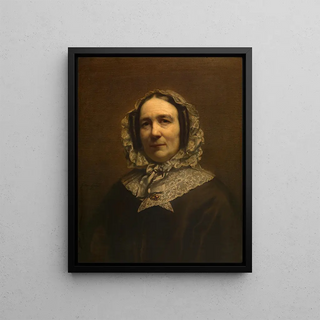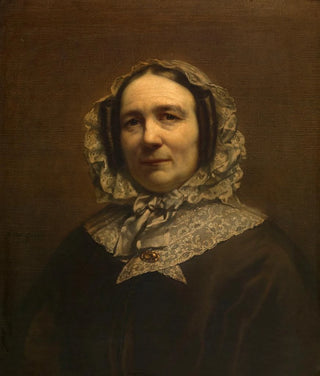Art print | Madame Le Delier - Jozef Van Lerius


View from behind

Frame (optional)
Madame Le Delier Art print - Jozef Van Lerius – Captivating introduction
In the fascinating world of art, some works stand out for their ability to capture the very essence of humanity. "Madame Le Delier" by Jozef Van Lerius is one of those creations that, through its delicacy and elegance, transports the viewer into a universe where time seems suspended. This painting, imbued with realism and finesse, invites us to contemplate the portrait of a woman whose grace and dignity transcend eras. The piece, a true testament to a bygone era, evokes deep emotions and prompts reflection on beauty and the human condition.
Style and uniqueness of the work
Jozef Van Lerius's style is characterized by meticulous attention to detail and mastery of painting techniques that allow him to create portraits of rare intensity. In "Madame Le Delier," light plays a fundamental role, highlighting the delicate features of the model's face while enveloping the entire scene in an intimate atmosphere. The colors, subtly chosen, evoke a soft and harmonious palette that enhances the sense of serenity emanating from the work. The composition, meanwhile, is carefully balanced, allowing the viewer to immerse themselves in the captivating gaze of the painted woman. This blend of technique and emotion makes this work a striking example of 19th-century realism, where every detail matters and every brushstroke seems charged with meaning.
The artist and his influence
Jozef Van Lerius, born in Belgium in the 19th century, was an artist whose career was marked by an unceasing quest for perfection. Trained in the greatest art schools of his time, he established himself as a master of portraiture. His influence in the art world is undeniable, as he managed to combine tradition and innovation, inspiring many contemporary artists. Through his works, Van Lerius was able to capture not only the appearance of his models but also their essence, their story, and their emotions. "Madame Le Delier" is a perfect example of this ability to create an emotional connection between the viewer and the subject, making each

Matte finish

View from behind

Frame (optional)
Madame Le Delier Art print - Jozef Van Lerius – Captivating introduction
In the fascinating world of art, some works stand out for their ability to capture the very essence of humanity. "Madame Le Delier" by Jozef Van Lerius is one of those creations that, through its delicacy and elegance, transports the viewer into a universe where time seems suspended. This painting, imbued with realism and finesse, invites us to contemplate the portrait of a woman whose grace and dignity transcend eras. The piece, a true testament to a bygone era, evokes deep emotions and prompts reflection on beauty and the human condition.
Style and uniqueness of the work
Jozef Van Lerius's style is characterized by meticulous attention to detail and mastery of painting techniques that allow him to create portraits of rare intensity. In "Madame Le Delier," light plays a fundamental role, highlighting the delicate features of the model's face while enveloping the entire scene in an intimate atmosphere. The colors, subtly chosen, evoke a soft and harmonious palette that enhances the sense of serenity emanating from the work. The composition, meanwhile, is carefully balanced, allowing the viewer to immerse themselves in the captivating gaze of the painted woman. This blend of technique and emotion makes this work a striking example of 19th-century realism, where every detail matters and every brushstroke seems charged with meaning.
The artist and his influence
Jozef Van Lerius, born in Belgium in the 19th century, was an artist whose career was marked by an unceasing quest for perfection. Trained in the greatest art schools of his time, he established himself as a master of portraiture. His influence in the art world is undeniable, as he managed to combine tradition and innovation, inspiring many contemporary artists. Through his works, Van Lerius was able to capture not only the appearance of his models but also their essence, their story, and their emotions. "Madame Le Delier" is a perfect example of this ability to create an emotional connection between the viewer and the subject, making each






